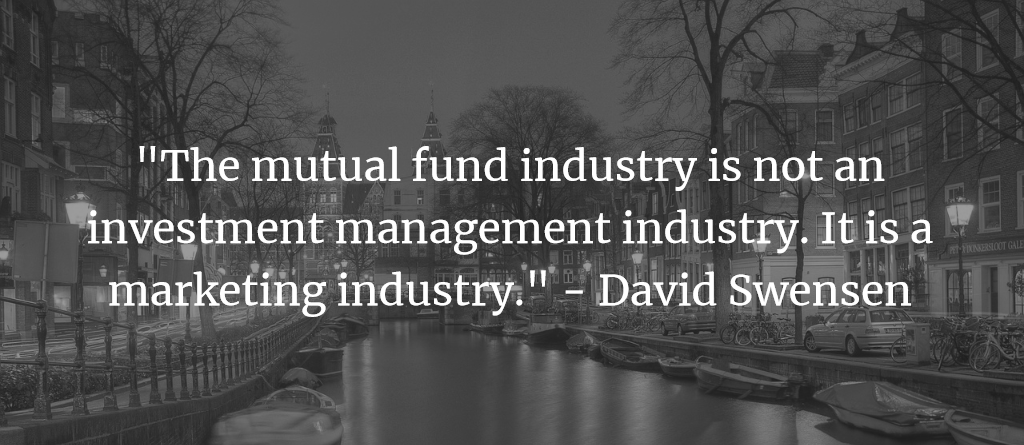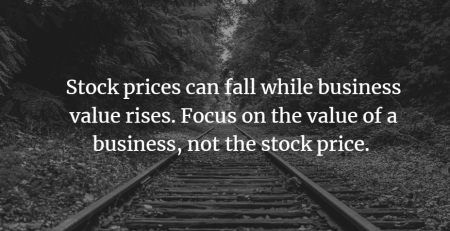What to look for in a fund
In our previous article, we made the case for why active management still makes sense in a passive-orientated world.
After all, if you want better than average returns, then you must be different from the average, which means taking an active approach. But how do you know which active fund to pick? How can you know if a given fund is better than an index, or if it is better than another fund?
As with most things worth thinking about, there is no simple answer here. There is no metric or formula that will do this for you. The best way to approach this problem is to think about it from first principles:
- Every fund, active or passive, is simply a portfolio of stocks.
- Stocks represent partial ownership in a company.
- Some companies are good, some average, and some are terrible.
- Stock prices don’t always reflect the value of these companies due to a variety of short-term reasons.
- One can buy great companies for less than they’re worth or buy terrible companies for more than they’re worth.
- To beat the market, active investors want a portfolio of shares in companies that are better than the average and ideally bought at a discount to their underlying value.
- In other words, buy and hold great businesses at attractive prices.
So, how can you tell if a fund is holding great businesses at attractive prices? Not always an easy task, but you can increase your likelihood of success by applying relatively simple logic and rationality to your approach. Let us provide a few areas to consider.
Diversification
An active fund manager needs to build a portfolio, yet is faced with tens of thousands of investable companies – how does he or she decide which to invest in? Most managers will start with the ‘index’ they’re trying to beat (.e.g., S&P 500), look at each sector within, and decide that they want to own one or a few companies in each (in fact, funds are often structured with rules stating this has to be the case).
When we say sectors, we mean things like: Oil & Gas, Pharmaceuticals, Banks, Cell Towers, Industrial gasses, Software, etc. The fund managers will rationalize that owning a piece of every sector is a method of reducing risk via diversification. The problem is that this approach mostly just reduces career risk for the manager, not investment risk for the actual end investors.
Just take a step back and think about this approach, doesn’t it seem a little illogical? It is obvious that not all sectors or industries are equally attractive or equally forecastable – some may be dying industries, some may be so heavily regulated that the returns are wafer-thin, some may be driven purely by unpredictable commodity prices, and others may be so complicated that it’s near impossible to know who the ultimate winners will be. There are many industries that are fundamentally not attractive enough to even warrant consideration for genuine long-term investment. These should simply be ignored.
After all, as an active manager, why invest in areas you know offer poorer potential returns and greater uncertainty, just to be able to say you’re diversified? That sort of diversification doesn’t reduce your risk, but it does reduce your returns. This seems to us like a simple point, but one ignored by most of the industry.
Instead, active investors should think of choosing industries to invest in like choosing a restaurant to eat in – if you select a terrible restaurant, it doesn’t really matter what you choose on the menu, your food is likely to be poor. If instead, you’re at a high-quality restaurant, you can likely pick anything, and it will be great. The same is true with industries. The best company in a terrible industry will likely deliver worse returns than the worst company in a fantastic industry.
As a firm, we apply this logic rigidly – we only invest in sectors and industries that are attractive. We believe that diversifying away from the best opportunities would increase our risk, not reduce it. Investing is hard enough without the unnecessary uphill battle of trying to find the one decent company in an otherwise dying industry, or the one company that might not go bankrupt in the next downcycle.
So, as a simple starting point to determine if a fund is likely to deliver you above-average returns, look at its diversification. If the fund holds lots of companies across many sectors, chances are the managers aren’t doing the sort of logical work you want them to. If instead, the fund manager has a clear understanding and logical explanation for the sectors and industries in which they invest, the odds are in your favor. And if they also present a clear and logical reason for the individual companies held, your chances have increased further still.
Risk Management
This brings us to the next key consideration for active management – and the most misrepresented – risk management. Most fund managers use volatility as their yardstick to measure and control risk – this includes measures like standard deviation, beta, Sharpe ratios, etc. These metrics are used because they are simple, quantitative (therefore allowing a ranking of funds), and widely accepted.
But simple logic tells us that volatility is not remotely representative of risk, and therefore any risk tool relying on volatility is flawed to the point of being useless (which is almost all of them). Volatility is backward looking, assumes a normal distribution, is based purely on stock price, and provides no reliable information about future investment risk. We’ve written about this issue in depth here.
Instead, the best way to appropriately control risk is to know what you own. It is as simple as that. Be wary of any fund that presents heavily mathematical or statistical approaches to risk management – they are likely telling you that they don’t really know what they’re doing. Ask anyone who relied on these risk tools during 2000, or 2008, or 2020, or 2022 and you’ll see how useful they really are.
One other point to make here is about risk concentration. Many funds have become popular in recent years by targeting one narrow subset of companies: be it high-tech, ‘disruptive innovation’ (buzzwords should automatically be an alarm bell…), ESG, etc. As an investor, when looking at these funds you need to ask some key questions: 1) is every holding in the portfolio ultimately the same bet? 2) do the companies themselves stack up as high-quality businesses, or have they just been selected because they fit the mandate or overall story of the fund? and 3) if certain macro variables changed tomorrow (as they tend to do) would the companies held still be viable? If an investment can be de-railed by inflation, a change in interest rates, commodity prices, or a government intervention, then it probably wasn’t a great investment to begin with.
Turnover
One last consideration for choosing an active fund is turnover (how often things are bought and sold). Not because turnover is a bad thing in and of itself (market opportunities do change), but because high turnover tends to be a symptom of a more speculative and therefore less reliable strategy. If a fund manager has done the work to determine whether a company is going to provide a high return over the next decade and has done the same for every company in the portfolio, then the hurdle rate for entering or exiting a position should become very high. But if instead, the fund manager is jumping in and out of positions every other month or quarter then either 1) their work leading up to their investment was poor and they didn’t really have conviction, or 2) they aren’t really investors but are more akin to speculators. Either is bad, and both should be avoided.
Conclusion
There are many other areas that could be considered when it comes to fund selection: manager tenure, team strength and depth, overall firm strategy and backing, integrity of investment philosophy, etc. But thinking through key areas like the above enables investors to greatly stack the odds of success in their favor when taking an active, long-term approach.
At the end of the day, long-term investing isn’t as complicated as many in our industry make it out to be. If you can find a portfolio of high-quality companies in secularly growing industries, at attractive prices, and then you simply wait for those businesses to compound their earnings, you will likely have a very successful investing career.
Disclosures: This website is for informational purposes only and does not constitute an offer to provide advisory or other services by GCI Investors in any jurisdiction in which such offer would be unlawful under the securities laws of such jurisdiction. The information contained on this website should not be construed as financial or investment advice on any subject matter and statements contained herein are the opinions of GCI Investors and are not to be construed as guarantees, warranties or predictions of future events, portfolio allocations, portfolio results, investment returns, or other outcomes. Viewers of this website should not assume that all recommendations will be profitable, or that future investment and/or portfolio performance will be profitable or favorable. GCI Investors expressly disclaims all liability in respect to actions taken based on any or all of the information on this website.
There are links to third-party websites on the internet contained in this website. We provide these links because we believe these websites contain information that might be useful, interesting and or helpful to your professional activities. GCI Investors has no affiliation or agreement with any linked website. The fact that we provide links to these websites does not mean that we endorse the owner or operator of the respective website or any products or services offered through these sites. We cannot and do not review or endorse or approve the information in these websites, nor does GCI Investors warrant that a linked site will be free of computer viruses or other harmful code that can impact your computer or other web-access device. The linked sites are not under the control of GCI Investors, and we are not responsible for the contents of any linked site or any link contained in a linked site. By using this web site to search for or link to another site, you agree and understand that such use is at your own risk.
All references and views offered including but not exclusive to any overall market commentary, asset class, attribution, outlook, valuation, potential returns, stocks, companies, business model, quality, outlook, management, valuation, execution, potential returns, investments, investment styles, market returns, expectations, forecasts or estimates and any other area of investing are the opinion of the manager and should not be taken as facts, projections or guarantees. All such opinions are subject to change are do not constitute a recommendation or solicitation to buy or sell a particular security.






